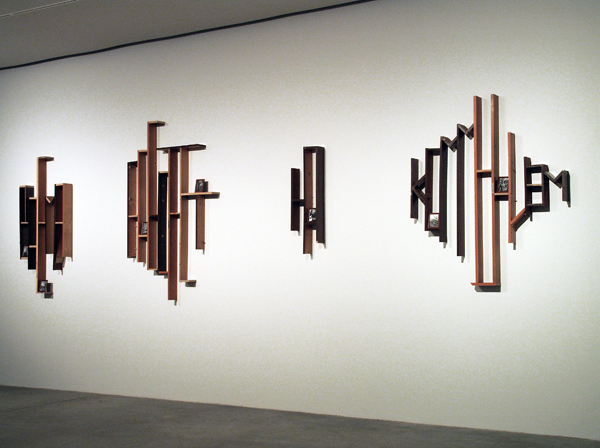Time Is Working on Kommunism, 2010
2010 - Sculpture (Sculpture)
372 x 206 cm
Arseny Zhilyaev
Arseniy Zhilyaev (born 1984 in Voronezh, Russia) is an artist, writer and political activist who lives and works in Moscow and Voronezh. Zhilyaev’s artistic practice poses questions about the ?ultural production in the postsoviet condition. To trace Arseniy Zhilyaev’s work, one should span from the avant-garde of the 1920’s to the ‘shock therapy’ of the 1990’s in Russia. As a member of the young generation of Russian artists, Zhilyaev looks at the changes of his country through the 20th century to compose his works. With a specific attention of art’s relations to politics, education and pedagogy, Arseniy Zhilyaev reflects on the different roles of the museum and exhibition making. Despite the current use of art as entertainment, Zhilaev wants to rethink the museum as an educational institution connecting art and history. His references include soviet museology, architecture and design of the avant-garde or experimental exhibition making of the late 1920. ?????? ??? (delay sam) or “do it yourself” is a work in progress descried by the artist as a research in the tradition of the Soviet and post-Soviet culture of non-professional worker’s folk art. “Usually ordinary people in the Soviet Union had no opportunity to frequently change the furniture according to their taste. But they could do it by themselves! It was during that period that workers’ amateur creativity flourished, exemplified in techniques such as woodcarving, hammered ironwork or amateur furniture design. It was part of free time, type of creative hobby. It was called ‘creative relaxation’. The strict division between work and leisure during the era of late socialism made this creativity possible. It was an extremely democratic art and this is what still inspires me today.”
Arseny Zhilyaev is arguably one of the most influential contemporary Russian artists of his generation. For Zhilyaev, his medium of choice is the exhibition itself. His practice is deeply rooted in the study of presentation and display of artworks, histories and social processes. His multi-faceted installations combine historical fact with fiction in imagining new possibilities and futures. Inspired by Soviet and Marxist Museology, Zhilyaev often turns to Russian Cosmism and its philosophies of the universal museum. To trace Zhilyaev’s work, one should span from the avant-garde of the 1920’s to the ‘shock therapy’ of the 1990’s in Russia. As a member of the young generation of Russian artists, Zhilyaev looks at the changes of his country through the 20th century to compose his works. With a specific attention of art’s relations to politics, education and pedagogy, Arseniy Zhilyaev reflects on the different roles of the museum and exhibition making. Despite the current use of art as entertainment, Zhilyaev wants to rethink the museum as an educational institution connecting art and history.
Colors:
Other works by: » Arseny Zhilyaev

© » KADIST
Arseny Zhilyaev
His large installation entitled The Museum of Proletarian Culture (2012) looked at the changes in artistic practice that have occurred in Russia throughout the last thirty years – from the amateur art of the late Soviet era to the commercialized post-Soviet cultural practices and the more recent self-expression via contemporary social networks...

© » KADIST
Arseny Zhilyaev
His large installation entitled The Museum of Proletarian Culture (2012) looked at the changes in artistic practice that have occurred in Russia throughout the last thirty years – from the amateur art of the late Soviet era to the commercialized post-Soviet cultural practices and the more recent self-expression via contemporary social networks...

© » KADIST
Arseny Zhilyaev
His large installation entitled The Museum of Proletarian Culture (2012) looked at the changes in artistic practice that have occurred in Russia throughout the last thirty years – from the amateur art of the late Soviet era to the commercialized post-Soviet cultural practices and the more recent self-expression via contemporary social networks...

© » KADIST
Arseny Zhilyaev
His large installation entitled The Museum of Proletarian Culture (2012) looked at the changes in artistic practice that have occurred in Russia throughout the last thirty years – from the amateur art of the late Soviet era to the commercialized post-Soviet cultural practices and the more recent self-expression via contemporary social networks...

© » KADIST
Arseny Zhilyaev
2014The Bolotnaya Battle Park Complex is the future home for the Museum of Russian History (M...

